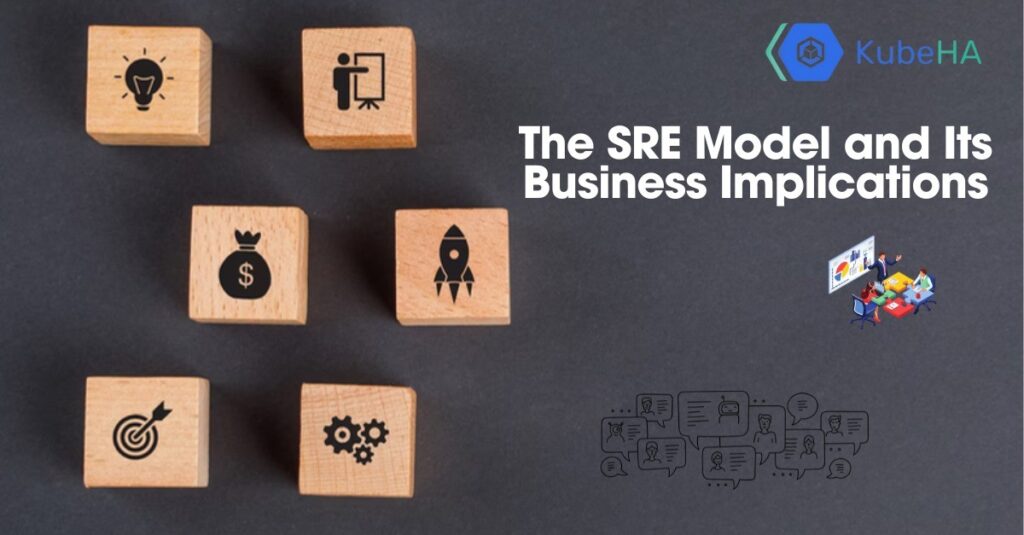
For software engineering and operations, the Site Reliability Engineering (SRE) model has emerged as a transformative approach to managing large-scale systems. Originally pioneered by Google, the SRE model has gained popularity across industries for its focus on reliability, scalability, and automation. However, beyond its technical aspects, the SRE model carries significant business implications that can shape organizational strategies and outcomes.
The Essence of the SRE Model
At its core, the SRE model blends software engineering practices with traditional operations responsibilities. It emphasizes the development of scalable and reliable systems through automation, monitoring, and proactive management. Key principles of the SRE model include:
- Service Level Objectives (SLOs): Defining precise performance targets that align with user expectations and business goals.
- Error Budgets: Allowing for a controlled level of service disruptions to prioritize innovation and development.
- Automation: Leveraging code to manage infrastructure, deployments, and repetitive tasks, reducing manual intervention.
- Blameless Culture: Encouraging a blame-free environment where incidents are treated as learning opportunities to drive continuous improvement.
Business Implications of SRE
1. Improved Customer Experience
Reliability directly impacts user satisfaction and retention. By embracing the SRE model, businesses can deliver more reliable services, reduce downtime, and enhance overall customer experience. This translates into increased trust, loyalty, and ultimately, higher revenue streams.
2. Enhanced Operational Efficiency
SRE’s focus on automation and proactive monitoring enables organizations to streamline operations and respond to incidents more effectively. By investing in robust monitoring tools, anomaly detection mechanisms, and incident response workflows, businesses can mitigate risks, minimize downtime, and optimize resource utilization.
3. Accelerated Innovation
Contrary to traditional approaches that prioritize stability over speed, SRE encourages a culture of experimentation and continuous improvement. By establishing clear SLOs and error budgets, organizations can foster a conducive environment for innovation, enabling development teams to iterate quickly, release new features, and respond to market demands in a timely manner.
Business Implications of the SRE Model
- Enhanced Reliability and Customer Satisfaction: By focusing on SLOs and error budgets, the SRE model ensures that services meet user expectations consistently. Improved reliability translates into higher customer satisfaction and retention, crucial metrics for long-term business success.
- Cost Optimization through Automation: Automation lies at the heart of the SRE model, enabling efficient resource utilization and reducing operational overhead. By automating routine tasks and scaling infrastructure dynamically, organizations can optimize costs while maintaining performance and reliability.
- Agility and Innovation: The SRE model’s emphasis on automation and error budgets fosters a culture of experimentation and innovation. Teams are empowered to iterate quickly, introduce new features, and adapt to changing market demands without compromising reliability.
- Risk Management and Compliance: Proactive monitoring, incident response, and disaster recovery mechanisms embedded within the SRE model help mitigate risks and ensure compliance with regulatory requirements. By identifying and addressing potential vulnerabilities early, organizations can safeguard their reputation and financial stability.
- Alignment of IT with Business Objectives: By setting clear SLOs and error budgets, the SRE model aligns IT operations with broader business objectives. IT becomes an enabler of business growth, providing the necessary infrastructure and support to drive innovation, expand market reach, and deliver superior customer experiences.
Implementing the SRE Model: Key Considerations
- Cultural Transformation: Adopting the SRE model requires a cultural shift towards collaboration, accountability, and continuous learning. Leaders must champion a culture of trust and empowerment, encouraging teams to embrace change and challenge the status quo.
- Investment in Talent and Training: Building and retaining a skilled SRE team is essential for successful implementation. Organizations should invest in training programs, mentorship initiatives, and talent acquisition strategies to cultivate expertise in SRE principles and practices.
- Tooling and Infrastructure: Robust tooling and infrastructure are critical enablers of the SRE model. Organizations should invest in scalable monitoring systems, automation frameworks, and cloud-native technologies to support continuous integration, deployment, and operations at scale.
- Measurement and Feedback Loops: Establishing meaningful metrics and feedback loops is essential for evaluating the effectiveness of the SRE model and driving continuous improvement. Regular retrospectives, post-incident reviews, and performance dashboards help teams identify areas for optimization and refine their practices over time.
SRE model offers a compelling framework for organizations to achieve operational excellence and drive business growth. By embracing the principles of the SRE model and aligning technical practices with strategic objectives, businesses can deliver exceptional customer experiences, mitigate risks, and stay ahead in a competitive marketplace. The journey towards adopting the SRE model may be challenging, but the rewards — in terms of improved reliability, agility, and business outcomes — are undoubtedly worth the investment. Follow KubeHA Linkedin Page KubeHA